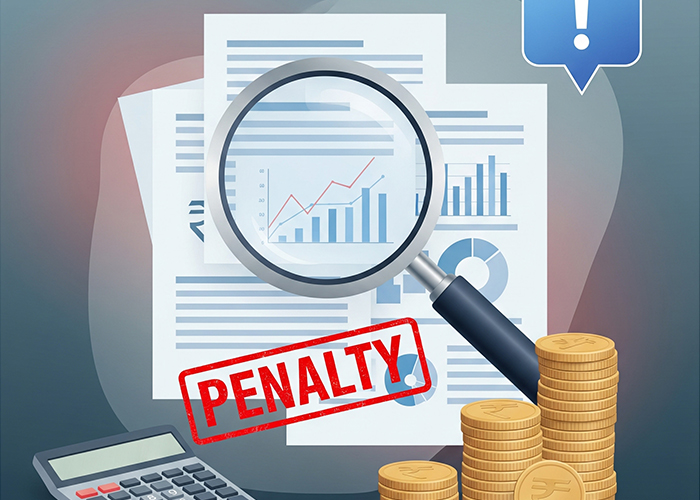Understanding Unexplained Investment under Income Tax Law: A Complete Guide
When it comes to income tax assessments, one of the most contentious issues taxpayers may face is the allegation of “unexplained investment”. The Income Tax Department, through various assessments and scrutiny procedures, has been tightening its grip on black money, benami transactions, and income concealment. One of the tools available to the Assessing Officer (AO) is Section 69 of the Income Tax Act, 1961, which deals with unexplained investments.
In this blog, we will cover the meaning of unexplained investment, its legal framework, consequences of non-compliance, and how taxpayers can defend themselves in such situations.
What is an Unexplained Investment?
Let’s look at a few scenarios that could lead to a Section 69 addition:
- Purchasing a flat or land without proper accounting in your books.
- Investing large sums in stocks, FDs, or mutual funds without documented sources of income.
- Buying high-value jewellery or luxury items not aligned with your reported income.
- Payments for property made in cash with no legitimate trail.

Burden of Proof
Under Section 69, the burden lies on the taxpayer to explain the source of funds for any investment. If you’re unable to substantiate the source through proper documentation, the AO is within his rights to treat the entire amount as undisclosed income.
Example: If you invest ₹30 lakhs in a flat and claim that it was funded through past savings and a loan from a relative, you must produce:
- Income records showing past savings,
- Loan agreement or gift deed from the relative,
- Proof of bank transactions.
Failure to substantiate any part can result in the entire ₹30 lakhs being taxed as unexplained income.
Consequences of Unexplained Investment
- Taxation at Maximum Marginal Rate
As per Section 115BBE (post-amendments), unexplained investments are taxed at a flat rate of 60% + surcharge and cess, making the effective rate over 78%.
- Penalty under Section 271AAC
In addition to tax, a 10% penalty may also be levied.
- Prosecution and Penalty under Benami Law
If the investment is made in someone else’s name, or appears to be benami, prosecution under the Prohibition of Benami Property Transactions Act may be initiated.
- Reassessment and Scrutiny
Once detected, the case may lead to reopening of earlier assessments, increased scrutiny in subsequent years, and closer monitoring of your financial activities.

How Can Taxpayers Defend Themselves?
Handling allegations of unexplained investment requires a strategic and well-documented approach. Here are some important steps to take:
- Maintain Proper Documentation
Ensure that you retain all records related to:
- Source of funds (salary, business income, capital gains, etc.)
- Bank transactions and statements,
- Loan agreements or gift deeds,
- Investment documents like purchase deeds or brokerage statements.
- Provide a Logical and Consistent Explanation
Your explanation should match your income profile. For example, if you’re a salaried individual earning ₹10 lakhs annually, claiming an investment of ₹50 lakhs without inheritance or loans may be hard to justify.
- Respond Promptly to Notices
Notices under Section 142(1), 148, or 131 require immediate attention. Ignoring these may lead to ex parte assessments or higher additions.
- Use Legal Precedents
Cite relevant case laws and CBDT circulars to support your claims. Legal precedents where courts have ruled in favor of taxpayers in similar scenarios can be persuasive
Our Success Story: Legal Victory in a Section 69 Case
Recently, our firm successfully defended a client who was facing scrutiny for:
- Unexplained deductions of ₹24,50,000, and
- Unexplained investment of ₹26,35,967.
Notices were issued under Sections 142(1) and 148. Our legal team, led by Adv. Sachin P. Kumar, submitted comprehensive documentation, including purchase deeds, bank statements, and proof of income sources. We also referred to legal provisions under Sections 57 and 69, as well as judicial precedents.
After detailed hearings, the AO ruled in favor of the client, accepting the source of funds and allowing the claimed deductions. This case is a classic example of how proper documentation and legal strategy can turn the case around.
CONCLUSION
Unexplained investments can lead to heavy tax liabilities, penalties, and legal complications. However, if handled correctly with a solid paper trail, consistent explanations, and timely legal intervention taxpayers can successfully defend against such allegations.
In today’s environment of data surveillance, PAN-Aadhaar linkage, and AI-based scrutiny, it’s crucial to be transparent, maintain financial discipline, and be proactive in responding to income tax notices.
If you’re facing any issues related to unexplained investments or income tax scrutiny, it’s wise to consult a qualified tax expert without delay.
For more such Information
You can contact us or drop us a mail on spkumarassociates@gmail.com or reach our website www.sachinpkumar.com

